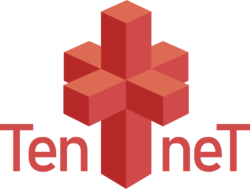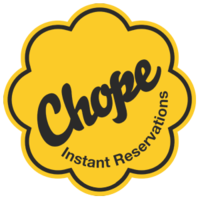Difference between revisions of "ANLY482 AY2017-18 Term 2"
Meherg.2014 (talk | contribs) |
|||
| Line 491: | Line 491: | ||
<tr> | <tr> | ||
<td> [[File:21 JMP logo.jpg|center|200px|]] | <td> [[File:21 JMP logo.jpg|center|200px|]] | ||
| − | [https://wiki.smu.edu.sg/ANLY482/ANLY482_AY2017-18T2_Group_28 | + | [https://wiki.smu.edu.sg/ANLY482/ANLY482_AY2017-18T2_Group_28 Analysis of Southeast Asian Hub Ports] </td> |
<td> The Straits of Malacca are one of the world’s most important trade corridors and transshipment regions, accounting for one quarter of the world’s transshipments. Furthermore, the ASEAN region is one of the fastest growing marine trade routes, as it includes many countries with developed and developing maritime infrastructure. There are 3 important ports in the Strait of Malacca, Port of Singapore, Port Klang and Port Tanjong Pelepas. Our sponsor, operates port of Singapore, one of the world’s largest ports. | <td> The Straits of Malacca are one of the world’s most important trade corridors and transshipment regions, accounting for one quarter of the world’s transshipments. Furthermore, the ASEAN region is one of the fastest growing marine trade routes, as it includes many countries with developed and developing maritime infrastructure. There are 3 important ports in the Strait of Malacca, Port of Singapore, Port Klang and Port Tanjong Pelepas. Our sponsor, operates port of Singapore, one of the world’s largest ports. | ||
| Line 562: | Line 562: | ||
<tr> | <tr> | ||
| − | <td>[[File:Shopee. | + | <td>[[File:Shopee logo.jpg|200px|center]] |
[https://wiki.smu.edu.sg/ANLY482/ANLY482_AY2017-18T2_Group_32 Improving Customers' Satisfaction] | [https://wiki.smu.edu.sg/ANLY482/ANLY482_AY2017-18T2_Group_32 Improving Customers' Satisfaction] | ||
</td> | </td> | ||
Revision as of 22:49, 14 January 2018
|
|
|
|
|
|
| Project Title | About the Project | Student Member(s) | Project Supervisor | Sponsor | |
|---|---|---|---|---|---|
| Know-Thy-Deals |
Eatigo is an online restaurant reservation platform that serves to optimize restaurant capacity, by offering time-based discounts to manage demand. Operating on the principles of yield management, eatigo tries to help connect "empty tables" with "empty stomachs". Since its launch in 2013, eatigo has built a 2 million subscriber base. |
Group 01 - sat@eatigo
|
Prof. Kam Tin Seong Associate Professor of Information Systems (Practice) | eatigo Pte. Ltd. | |
| Close-the-Loop | Arup is an engineering consultancy designing architecture, infrastructure, and urban planning worldwide. As part of their work on Downtown Line 3, engineering design and construction has happened in phases, producing data on the design specifications made in response to ground surveying data collected, and data on the implementation of those designs by contractors in each phase.
|
Group 02 - Josh & Fried Investigations |
Prof. Kam Tin Seong Associate Professor of Information Systems (Practice) | Arup Singapore Pte. Ltd. | |
| Our sponsor is a home-grown supply chain solutions company and leading regional supply chain management partner to a number of the world’s leading brands such as Dell, Motorola, Samsung, LG, Exxon Mobil, Unilever and Heinemann. The company has operations all over Asia Pacific, such as China, the whole of ASEAN, India and Korea and they service various industry segments: Chemicals & Healthcare, Consumers & Retail, Electronics & Technology, E-Commerce and Cold Chain.
A strong advocate for technological and operational innovation, the company advocates productivity and sustainability improvements through interactive solutions so that they can provide their diverse consumer-base from various industry clusters with world-class logistics services. With recent interest in an analytics, the company is now looking towards implementing analytical solutions to help manage their operational processes and improve the efficiency of operations with the help of technology. As technology keeps improving, the company needs to stay ahead of their competition by staying relevant and efficient, so our group aims to help them by improving the operations of one of their clients by implementing a dashboard so that visualisations can be done automatically with minimal work from the operations head so that overtime hours can be better managed. |
Group 03
|
Prof. Kam Tin Seong Associate Professor of Information Systems (Practice) | A Singapore-based Supply chain Management Company | ||
| Social Media Analytics with SGAG | SGAG is a local news media and content distribution platform based in Singapore. The company was first started by co-founders Karl Mak and Xiao Ming as a spin-off project of 9GAG to generate localized content in 2012. Unlike 9GAG which allows users to upload their self-generated content, or using content taken from other social media platforms, SGAG produces and uploads its own original content. Their content is centered primarily around memes and issues that are relevant to young Singaporeans. Together with MGAG, the company’s Malaysian branch, SGAG is owned by the Hepmil Media Group.
To capture the interests of a wider audience, content generation is currently based on four strategies: relevance to audience, contains well-articulated stories, first to be published, and being unexpected. As of today, SGAG has approximately an audience size of 4 million per month across its platforms. However, SGAG competes within a rapidly changing social media landscape where trends are short-lasting. It is therefore vital for the company to identify how to swiftly capture new trends and optimize their content for their targeted audience to attain a higher reach. This is relevant as SGAG’s profitability is tied to its ability to effectively capture audience. Our project would strive to fulfill such goals by using analyzing their existing content published on their Facebook and YouTube channel. |
Group 04
|
Prof. Kam Tin Seong Associate Professor of Information Systems (Practice) | SGAG Media Pte. Ltd. | |
| Red Dot Payment |
Founded by a group of visionary financial technology payment experts in 2011, Red Dot Payment (RDP) has grown into a trusted online payment company providing premium payment solutions and expertise to the brightest merchants across Asia Pacific. Bringing best-in-class practices, RDP is the trusted FinTech partner of banks, merchants, payment schemes, payment gateways, non-banking financial institutions, security and fraud management system providers. In 2016, RDP grew to handle millions of transactions across the globe, managed by a dedicated 40-person strong operation - with headquarters in Singapore, and offices in Thailand and Indonesia. Its products and services include - RDP connect, InstanCollect, InstanPay, InstanPromo and InstanToken. |
Group 05
|
Prof. Kam Tin Seong Associate Professor of Information Systems (Practice) | Red Dot Payment Pte. Ltd. | |
| Forex Currency Pair Predictive Modelling | pH7 is a private investment firm that serve clients who are keen to appreciate their wealth and grow their capital. With its expertise in trading of financial instruments and information analysis capabilities, it provides business solutions that are customised to their clients’ needs. Capitalising on cutting edge technology in their work, pH7 has been excelling in efficiency and professional.
|
Group 06
|
Prof. Kam Tin Seong Associate Professor of Information Systems (Practice) | pH7 Investment | |
|
|
Dalsey Hillblom Lynn (DHL), has been transforming worldwide logistics since 1969. From creating the International Air Express Industry, to giving flight to the Parcelcopter, DHL aims to connect people regardless of where they are.
|
Group 07 - Data Heavy Legends
|
Prof. Kam Tin Seong Associate Professor of Information Systems (Practice) | [1] | |
|
Predictive Parking Enforcement - Tackling indiscriminate parking by bike-sharing users |
Beginning their operations in January 2017, oBike is Singapore’s first homegrown stationless smart bicycle-sharing company which uses technology to change how transportation is viewed locally. oBike has bicycles located all over the island, and these bikes have built-in Bluetooth locks to enable one-way first and last mile commuting. This provides a convenient and environmentally friendly commute option for all, especially given Singapore’s compact size and interconnected urban areas. Despite intense competition stemming from other bicycle-sharing companies such as Mobike and OFO, oBike has achieved over one million downloads since its inception. Data has revealed that the company has consistently been at the top in terms of total number of application downloads, earning them the title of “Southeast Asia’s bike-sharing leader.” However, in recent months, Singapore’s Land and Transport Authority (LTA) has issued new rules and regulations, requiring bicycles to be parked in designated yellow boxes around the islands. LTA enforcers survey the island, and issue tickets to bike-sharing companies in the event where bicycles are found to be illegal parked. From the time a ticket is issued, oBike has a mere four hours to move their illegally-parked bicycles. Failure to do so will incur hefty fines. Consequently, oBike’s current challenge is to manage illegal parking of their bicycles. |
Group 08
|
Prof. Kam Tin Seong Associate Professor of Information Systems (Practice) | oBike Asia Pte. Ltd. | |
| Koi Logistics Analysis |
insert description here |
Group 09
|
Prof. Kam Tin Seong Associate Professor of Information Systems (Practice) | KOI Thé Singapore Pte Ltd | |
| Inventory Analytics for F&B Company |
Our sponsor is a food-service organisation that owns and manages various renowned restaurant brands. XYZ Company has evolved into different concepts, with further overseas expansion. Under these concepts, the group has a total of 13 outlets in Singapore. Currently, our sponsor is not able to accurately determine the number of ingredients to order for their chain of restaurants. It is often based on guesswork and gut feeling which has often led to excessive holding costs as well as food wastage and in some cases, shortage of ingredients. This is not ideal as it may lead to various issues such as cost due to the non-freshness of the product, throwing of food due to expiry, not enough space in storage, the inability to satisfy customer demand, etc. Our main objective is to forecast the number of ingredients needed for the next order cycle and create a user-friendly application which they can use. This application would be based on a predictive model that we will develop and refine. With this application, the staff can more accurately gauge the optimal inventory quantity and order quantity and not need to rely on gut feeling from previous experience, as is the existing practice. In summary, our business goal is to ensure accurate and optimal orders to fulfil storage, optimising storage space for each individual outlet. |
Group 10 - TenneT
|
Prof. Kam Tin Seong Associate Professor of Information Systems (Practice) | XYZ Company (Information Withheld) | |
 Alleviating Operational Costs |
Company ABC is a local SME within the logistic sector here in Singapore and is a typical example of a company that is currently facing problems maneuvering through its data to derive operational solutions. More specifically, Company ABC is facing an overarching problem of high operational costs which is primarily caused by un-optimized hiring in the various peak and erroneous filling process, which the team aims to solve through analytical approaches. The team will be utilizing several key software and libraries, as well as taking into consideration the various limitations pertaining to the data, and ultimately aims to reduce the operational costs of Company ABC. Besides having short-term cost reductions, the company may also benefit from greater employee satisfaction and better brand reputation – which could potentially aid the company in achieving its long-term vision of expanding into other countries. |
Group 11 - T.W.O
|
Prof. Kam Tin Seong Associate Professor of Information Systems (Practice) | Logistic Company ABC | |
 The National Arts Council |
The National Arts Council (NAC) champions the arts in Singapore. The organisation plays a key role in nurturing creative excellence and supporting broad audience engagement, ultimately to develop Singapore as a distinctive global city where the arts inspire Singaporeans and connect our communities.
In supporting the arts scene, NAC has managed to quantify the qualitative in performing an annual National Population Survey which captures sentiments and participation behaviours amongst Singaporeans. As such, with the initial buy-in towards data, NAC is interested in exploring the potential of their databank collection spanning past decade |
Group 12: Team NAC
|
Prof. Kam Tin Seong Associate Professor of Information Systems (Practice) | The National Arts Council | |
| Training Integrated Management System | In_Progress. |
Group 13
|
Prof. Kam Tin Seong Associate Professor of Information Systems (Practice) | Logistic Company XYZ | |
| Delivery Schedule Optimisation |
Logistic Company X is one of the world's greatest global market leader in the logistics industry. Company X commits its expertise in international parcel, express, air and ocean freight, road and rail transportation, contract logistics and international mail services to its customers.
|
Group 14
|
Prof. Kam Tin Seong Associate Professor of Information Systems (Practice) | Logistic Company X | |
| Beverage Company X | Our sponsor, beverage Company X, has established more than 80 years of brewing excellence and has a portfolio of beers that is available over 75 markets globally. With a number of large brands in their portfolio, specific and targeted marketing campaigns are crucial in driving sales and establishing brand uniqueness between one another. As a project team, we would like to determine the effect of marketing on sales, thus allowing our client to make improved marketing decisions.
|
Group 15
|
Prof. Kam Tin Seong Associate Professor of Information Systems (Practice) | [Beverage Company X] | |
| Assessing success factors and impact of YMCA's programmes |
As one of the biggest and most recognizable VWOs in Singapore, Young Men's Christian Association (YMCA) prides itself on being at the forefront of social innovation in the VWO landscape, with their programmes being fully subscribed to by organizations and individuals. Despite having a large reach across different target communities, YMCA has not been able to accurately identify if they have truly made an impact on their beneficiaries, or their key success factors in their programmes. Hence, a Social Return on Investment (SROI) framework will developed based on their current data to provide directions for YMCA to improve their programmes.
|
Group 16 - Village People
|
Prof. Kam Tin Seong Associate Professor of Information Systems (Practice) | Young Men's Christian Association (YMCA) | |
| Behavioral analysis of users from Database Request Log |
With over 250 000 e-books provided by both Lee Ka Shing (LKS) library and Kwa Geok Choo (KGC) law library through the web service at library.smu.edu.sg, SMU library provide an array of collections to cater to support teaching and research across the multiple schools and faculties. Currently, SMU library purchases e-books on certain databases through the Patron Driven Acquisition (PDA) scheme. The PDA scheme allows SMU library to list e-books that are not yet purchased as “available” to SMU community. These e-books are subsequently automatically purchase upon meeting some trigger points when access by the SMU community. At the moment, it has been highlighted that some e-book purchases are triggered by a single unique user due to repeated access. As a result, it diminishes the effective use of PDA funds as the e-books are not widely used across SMU community. We aim to derive actionable insights from the data based on the behavioural patterns of users and understand the extent of effectiveness that PDA provides in meeting the needs of SMU community. |
Group 17
|
Prof. Kam Tin Seong Associate Professor of Information Systems (Practice) | SMU Library | |
 Developing a cost predictive model for a cleaning company
Developing a cost predictive model for a cleaning company |
XYZ Pte Ltd is a local cleaning and conservancy company that provides building cleaning services, landscape care and maintenance services activities. They have developed an extensive track record in the local cleaning industry, being actively involved in both commercial and government projects from their wide range of established clientele. The company hopes to benefit from more business opportunities in the future through value-adding contracts and a higher professional standing.
The team aims to provide insights with regards to purchases and related costs that will help reduce operating expenses for the company. This will include understanding the expenditure patterns and trends that relate to the company’s cleaning projects undertaken. |
Group 18 - Team DAcct
|
Prof. Kam Tin Seong Associate Professor of Information Systems (Practice) | XYZ Pte. Ltd. | |
| Staff scheduling and route plan for home nursing nurses | This project aims to provide a staff scheduling and route plan for nurses who are providing routine checkups and other services to the elderly in the comfort of their own homes. We aim to develop an algorithm, taking into consideration the appointment duration, traveling time to the patient’s location and other constraints to optimise the schedule for the nurses. This algorithm will be able to be used by all home health care foundations in the future to help them schedule their nurses efficiently. |
Group 19 - Group Name
|
Prof. Kam Tin Seong Associate Professor of Information Systems (Practice) | Fujitsu-SMU Urban Computing and Engineering (UNiCEN) Corp. Lab | |

|
We aim to optimise the online and offline resource availability in the library to maximise the learning effectiveness of SMU students. We further aim to analyse if usage patterns vary between students based on certain attributes like Programme, Year of Graduation and Education Level. This will help in develop actionable insights to alter current training and workshop methodology, search results on keywords and distributions channels of this content. |
Group 20 - MaxiMuM
|
Prof. Kam Tin Seong Associate Professor of Information Systems (Practice) | SMU Libraries Analytics and Research Department | |
| Web Analytics for a Children's Education Company | In_Progress. |
Group 21 - Shiksha
|
Prof. Kam Tin Seong Associate Professor of Information Systems (Practice) | Children's Education Company | |
| Freight Data Analysis | In_Progress. |
Group 22 - DHL Freighters
|
Prof. Kam Tin Seong Associate Professor of Information Systems (Practice) | DHL Singapore | |

REO |
In_Progress |
Group 24
|
Prof. Kam Tin Seong Associate Professor of Information Systems (Practice) | Real Estate Online (REO)
[Sanitised] |
|
| Improving Chope’s marketing campaigns though data analysis | Chope is a 24/7, free-of-charge, instantly-confirmed, restaurant reservations company.Trusted by a network of over hundreds of restaurants in Singapore, Hong Kong, Shanghai and Beijing, they offer a seamless dining experience starting with easy reservations because life is too short to wait in line.
Most of the restaurant reservations on the Chope system are done on its website. Hence, the marketing channel utilised most by Chope is Electronic Direct Mailer (EDM) to its user base, featuring content such as promotional deals, new restaurant additions and curated lists. As consumers have different preferences, Chope hopes to improve the effectiveness of its EDM campaigns by having more segmentation and personalisation of their marketing campaigns, which they believe would result in an increase in the number of reservations per user from the existing user base, translating directly to more revenue being generated. |
Group 25
|
Prof. Kam Tin Seong Associate Professor of Information Systems (Practice) | The Chope Group Pte. Ltd. | |
| Geospatial Analysis for Branch Location Optimization | Singapore Pools is the sole legal lottery company in Singapore. Its parent company is Tote Board. They have over 100 branches spread across Branch, Retail and STC as well as a growing online presence. Their main goal however, is to promote safe betting and contribute to the community. The company contributes over 60% of their profits to the betterment of the community each year.
Pools has been facing a road block while deciding locations for their upcoming branches. They have conquered central Singapore and need a smarter method to filter out their possibilities. Our project will use location based data and find its relationship with the financial performance of Pools branches all over Singapore. Using this, we aim to find the optimal weightage of variables to supply them with, in order to find a location that is most in line with the client’s goals. |
Group 26 - Data Divers
|
Prof. Kam Tin Seong Associate Professor of Information Systems (Practice) | Singapore Pools Ltd. | |
| In_progress | In_Progress. |
Group 27
|
Prof. Kam Tin Seong Associate Professor of Information Systems (Practice) | Logistics Company | |
| Analysis of Southeast Asian Hub Ports | The Straits of Malacca are one of the world’s most important trade corridors and transshipment regions, accounting for one quarter of the world’s transshipments. Furthermore, the ASEAN region is one of the fastest growing marine trade routes, as it includes many countries with developed and developing maritime infrastructure. There are 3 important ports in the Strait of Malacca, Port of Singapore, Port Klang and Port Tanjong Pelepas. Our sponsor, operates port of Singapore, one of the world’s largest ports.
Expanding a port’s capacity requires a large capital outlay. Furthermore, Singapore incurs a high opportunity cost due to its landmass constraints. Therefore, capacity planning is important to ensure that the port achieves a high utilization rate and maximizes its profit potential. Through this study, we hope to gain insights into the operation of these ports, and then use their respective strengths and weaknesses to formulate relevant operational strategies. |
Group 28 - 21 JMP SPREADSHEET
|
Prof. Kam Tin Seong Associate Professor of Information Systems (Practice) | PSA Corporation Limited | |
Byte Syzed |
*Analytical tool for a childcare company* |
Group 29 - Byte Syzed
|
Prof. Kam Tin Seong Associate Professor of Information Systems (Practice) | Erumpere | |
|
XYZ Web hosting company is an independent media publisher that focuses on travel and lifestyle stories for Singaporeans. They give locals trusted hyper-local information on what to do in and out of their country. This is done through their website, YouTube channel, Facebook page and Instagram. Their website is one part editorial based and one part community based where members can upload their own reviews and have their say about everything Singapore. Today, XYZ Web hosting company reaches over 3 million Singaporeans each month. |
|
Prof. Kam Tin Seong Associate Professor of Information Systems (Practice) | XYZ Web hosting company | ||
| oBike is Singapore's first homegrown stationless smart bikesharing company which uses technology to change how transportation is viewed locally. It allows commuters to travel during one-way first and last mile commuting – via bicycles located all over the island. As the use of smart bike sharing becomes more prevalent, the number of indiscriminate parking is on the uprise too. oBike has received numerous tickets from Land Transport Authority (LTA), Town Council and NParks regarding bike users not parking within the marked out yellow box. The project objective(s): |
Group 31
|
Prof. Kam Tin Seong Associate Professor of Information Systems (Practice) | oBike | ||
|
Shopee, a Sea company, is the leading e-commerce platform in Southeast Asia and Taiwan. It is a platform tailored for the region, providing customers with an easy, secure and fast online shopping experience through strong payment and logistical support. It aims to continually enhance its platform and become the region’s e-commerce destination of choice via ongoing product optimisation and localised user-centered strategies. However, despite the influx of cash, Shopee's profitability remains questionable due to the high marketing costs incurred in expanding consumer base. Hence there is a need to for Shopee to strengthen its market position against many other e-commerce competitors and examine ways for the company to cut costs and maximize their resource for business longevity. |
Group 32
|
Prof. Kam Tin Seong Associate Professor of Information Systems (Practice) | Shopee |












